Posted by opspl-online Aug - 13 - 2015 0 Comment
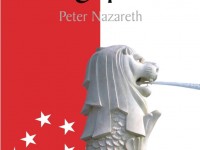
Peter Nazareth of the University of Iowa wrote this two-part work on Singapore literature. With his panopticon vision, Nazareth presents informative insights. His work on the writing of the sovereign city-state and Southeast Asian island country is being specially published as an e-book.
Re-membering Singapore, to the author, involves placing diverse pieces together to re-create the country. In it, he attempts a new form of criticism. Nazareth's purpose was to create a way of writing literary criticism about Singapore's literature. He has giving the criticism a name (or, more accurately, names for different types of criticism), to have a handle for dealing with so much Singapore literature. Of giving us an idea about Singapore literature without being able to deal with everything.
Categories:
Posted by opspl-online Apr - 18 - 2015 0 Comment
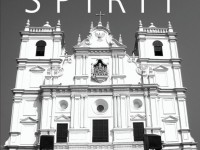
This work spans over 81,000 words and over 483,000 characters. it has 304 pages and over six dozen photographs. Many of which are compiled for the first time, and a few of which are so old that most of us might have even forgotten that these existed.
Three aspects of Valmiki Faleiro's work would perhaps strike any reader who comes across it, as it did to me.
Firstly, Valmiki is a story-teller par excellence. He goes into full flow when he sees an interesting story. This is true of the man in real life, as it is obvious from his writing. Those of us who remember the coverage he gave Margao -- and Salcete -- in his West Coast Times days, back in the late 1970s and early 1980s, will vouch that the man has not lost his touch.
Categories:
Posted by opspl-online Apr - 15 - 2015 0 Comment

Perusing through the articles in this book on Goan folk music authored by Lucio Rodrigues, the pioneer, and renowned Goan folklorist, was like diving to the bottom of the ocean with so many beautiful pearls and nuggets that you just want to keep collecting and never stop. Indeed I enjoyed my dive immensely and understood the mando, dulpod, and deknni better than ever.
Categories:
Posted by opspl-online Apr - 12 - 2015 0 Comment
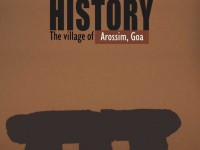
Confucius said: Study the past if you would like to divine the future.
The village of Arossim is known to the outside world for its scenic beach. It is a rural part of South Goa and actually has a long and complex history.
Arossim is situated between the Arabian Sea and tributaries of the River Sal. This agricultural land has sustained inhabitants since Neolithic times.
Early tribal rituals, Hindu traditions, and Christian practices have influenced the region. Each contributed through the centuries to the unique character and customs of the people.
In this book Themistocles D'Silva explores the forgotten and concealed history of the region. A history that goes back to the Megalithic Period. He was pushed into doing this work after recognizing that stone clusters nearly hidden in the rice fields are in fact monuments of an ancient settlement. This book a his revision of his 2011 book.
These megaliths were erected perhaps 3000 years ago and still stand tall. But, over time, their significance has been forgotten. D'Silva also takes us to the land, its people, shrines, festivals and feasts and temples. Besides, his book covers notable facts and events, priests and nuns, personalities from the past, slavery in colonial Goa. And more.
D'Silva grew up in Arossim and is now a scientist in the US. He portrays many aspects of the village, including the ancient system of self-government and the profound effects of Portuguese colonialism.
He unravels the origins of many earlier and present day local customs. Some are now fading as Arossim modernizes and changes. These pages are an inspiration and a model for how you too can discover your own village.
Themistocles Themis D Silva studied in a one-room village school in Arossim. He also attended the local public elementary school in Portuguese, and then Loyola High School, Margao. He graduated from St. Xavier's College, Bombay. Later, he obtained a Ph.D. in Organic Chemistry in the US.
After post-doctoral research there, he took up a position in industry. D'Silva. He is credited with many patents and scientific publications. He recently authored a scholarly book on the Bhopal disaster, The Black Box of Bhopal.
This book is a thoroughly revised edition of D'Silva's earlier book, now out of print. His earlier book on the subject was called Beyond the Beach: The Village of Arossim, Goa, in Historical Perspective. It was published by Goa,1556 in 2011.
Categories:
Posted by opspl-online Nov - 28 - 2014 0 Comment
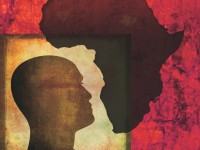
Caught between settler domination and racism on the one hand and the rising tide of African nationalism and racism on the other -- "the white devil and the deep black sea" -- the Indians of Kenya emerge almost as a pariah group in the years of struggle leading to Kenya's independence in December 1963. Their failure then, and in subsequent years, to secure fair representation, rights to land ownership and freedom from racial discrimination form the subject of this book.
The author played a prominent role in Indian political life in Kenya from 1944 to 1960. Through the records of the East Africa Indian Congress, his own speeches and those of others, newspaper reports and teh recording of the thrust and parry of parliamentary debate, he documents the fractured state of Indian political life, including the fatal Hindu-Muslim division over separate electorates, skilfully manipulated by the colonial government to the advantage of the European settlers.
Categories:
Posted by opspl-online Oct - 13 - 2014 0 Comment

Seeking the homeland of yesteryears, Dubai-based, Goa-born interior designer and architect Joseph C Dias (JoDi) has illustrated the Goa of his childhood, a far cry from its heady identity of today. Developed in a postcard format, these offer terrific insights into the charm of a simpler time, titled Jodi's View Cards of Old Goa. Kanika Sharma gets an exclusive dekko.
Categories:
Posted by opspl-online Aug - 26 - 2014 0 Comment
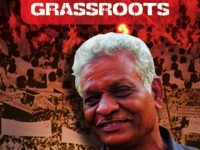
Justice at the Grassroots: A Tribute to Antonio Francisco Fernandes, Leader of Goa's Tribal Communities. By Cyril Aleixo Fernandes.
The Gavddas (also known as the Kunbis) were the first known settlers in this Land of the Golden Harvest which today goes by the name of Goa. Later settlers took advantage of this peaceful community, usurped their land and refashioned their deities. Today, centuries later, they find themselves on the fringe of Goa's development, largely excluded from policy-making, and bearing the ill effects of unplanned and unwanted 'development'.
Categories:
Posted by opspl-online Jun - 9 - 2014 0 Comment
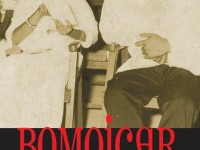
From Goan "joints" at Dhobitalao (originally a washerman's lake), to the quadrangles of Byculla, Mazagon, Grant Road or Colaba, and beyond.
Football at Cooperage and Goan food at Ballard Estate all exported the Goan way of life to that city, which today has a population of 20 million. A new book on the subject seeks to capture the essence of it all, as it played out in the 20th century.
Titled 'Bomboicar: Stories of Bombay Goans, 1920-1980', the book is edited and compiled by journalist Reena Martins, originally from Velim but raised in Poona and currently working in Mumbai. It is available for sale at Golden Heart (Margao), Broadway (Panjim) and via mail order from goa1556@gmail.com
Categories:
Posted by opspl-online May - 29 - 2014 0 Comment
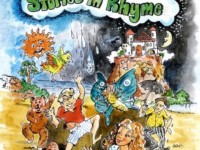
It is hard to define life as each one of us has a different interpretation. However, when you meet young writer Frederika Menezes you get the feeling that there is one who can actually define life for you. A cerebral palsy patient Frederika suffers from physical disability, but there is no room for complaint in her life and on the contrary, is happy for all life has given her. I've been lucky all along and I acknowledge that, says Frederik. These days Frederika has more than one reason to be excited about life. Today, two of her books are being released Unforgotten, a young adult novel, and Stories in Rhyme, a book of verse for children.
For Frederika her strength comes from family and friends whom she cherishes. She is constantlyin touch with friends over emails and social media. She believes that technology has made life easy for her. Technology is helpful for everyone, not only me. I type with two fingers and I am quite fast compared to people who type with both hands, quips Frederika, who started typing with typewriters.
Categories:
Posted by opspl-online May - 29 - 2014 0 Comment

Unforgotten is a novella about love lost and found; a first person narrative, where sustained reflection blends with action to trace the hero's journey through its many twists and turns. It carries the flavor of an age-old allegory about the artist grappling with his demons, internal and external, as he pines for his muse. Frederika Menezes has carefully painted a realistic setting for Ian, her central character, and has set in motion forces that drive him; from India to England, from home to office and to the mental hospital, to the writing desk, to the guitar, to the pain of loss of love, to the discovery of inspiration. Yet, the allegorical quality of the story is what lingers when the last page is turned. And yes, Goa finds place here too, a dream-like world which holds what is most vital, and never quite forgotten. --Isabel de Santa Rita Vas .Theatre promoter, youth mentor and former professor at Dhempe College.
An engaging love story. Salil Chaturvedi. Poet and author
now she has nothing but the storm to create a past with but then she had her love and her friends, and though they turned away, long before now, she can recall them in her mind, hear their voices and feel momentarily alive in the company that will always be with her but never a part of her life as once it was. Was she right? Ian took time to realize the intensity of his lost love, his first love. But when he did, Ian left no stone unturned to retrieve it. The tribulations that Ian goes through fortifies our belief that emotions and sentiments are the same, whether in Europe or in Asia; in Kent or in Goa.
Categories:












